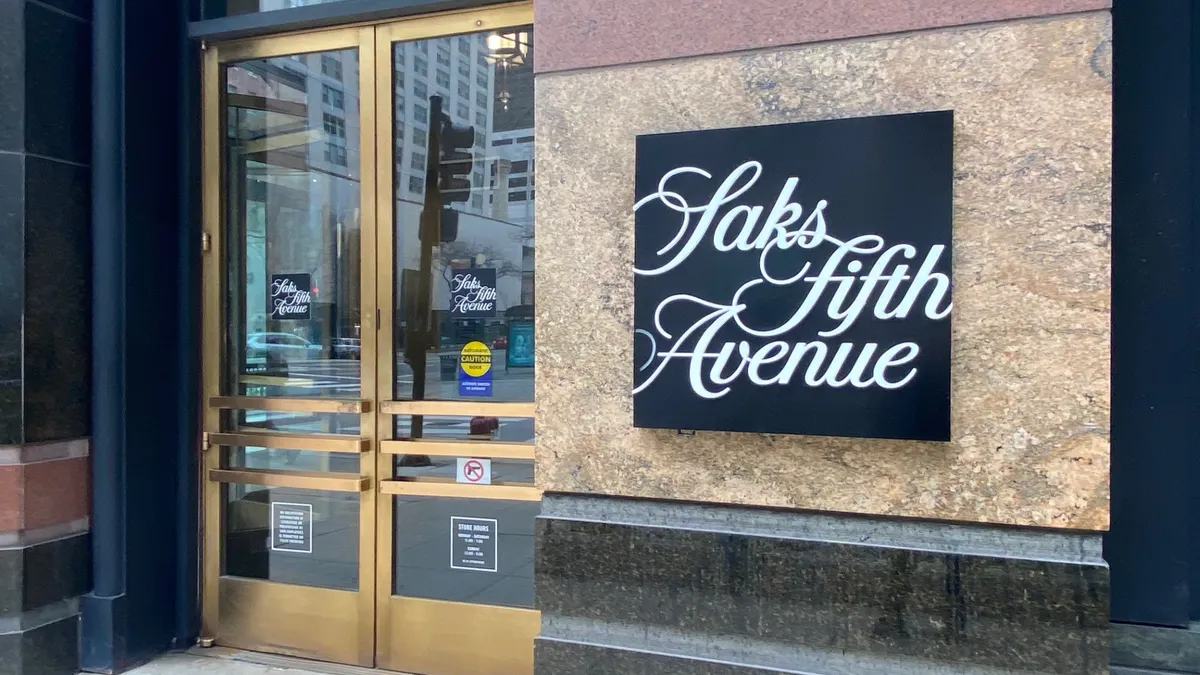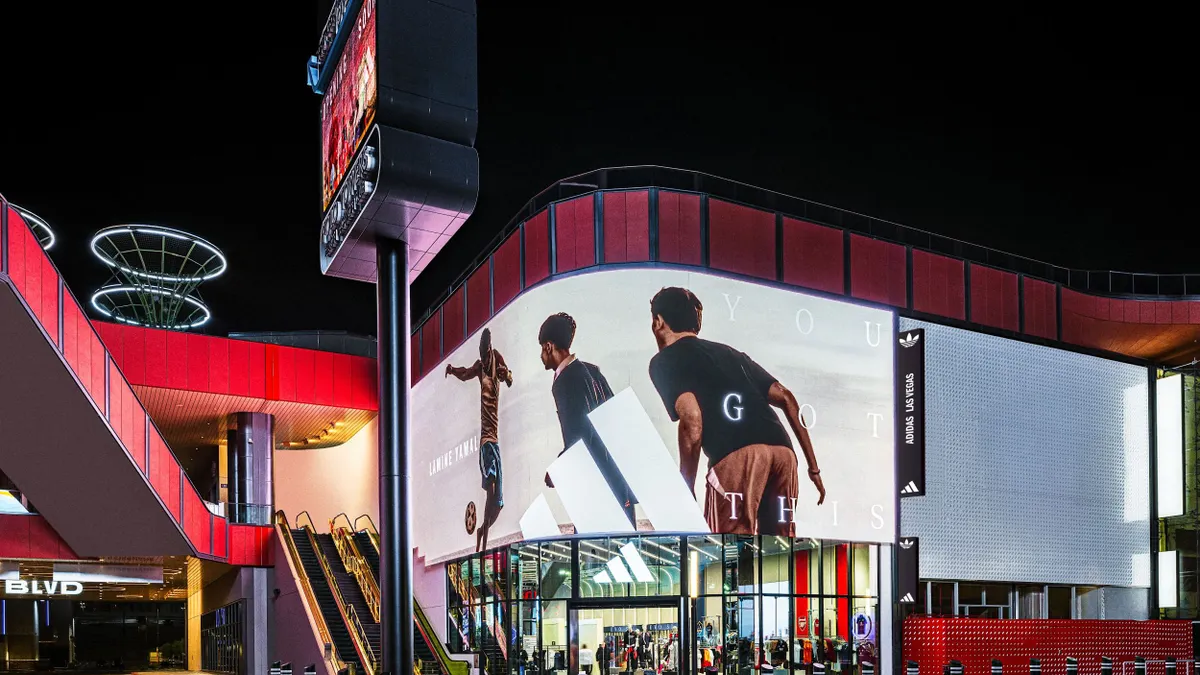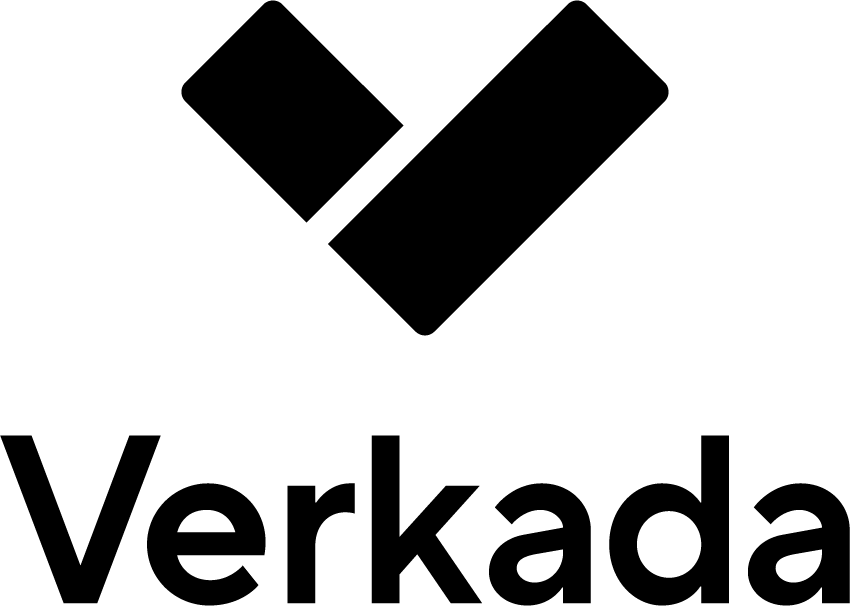Dive Brief:
- Saks Global Q2 revenue fell more than 13% year over year to $1.6 billion, missing the company’s own expectations, the luxury retailer said Thursday. Gross merchandise value edged down to $2 billion from $2.1 billion a year ago.
- CEO Marc Metrick attributed the softer-than-expected results largely “to inventory challenges” that have continued into Q3. Ending inventories were $1.9 billion, down from $2.1 billion last quarter, according to an emailed press release.
- Gross margin contracted by 20 basis points to 37.9%, which the company said was due to “higher full-price selling offset by minor shifts in sales mix, seasonal markdowns and promotional costs.” Net loss widened by more than 6% to $288 million.
Dive Insight:
Saks Global is encountering the scenario that analysts have warned about for months — that the luxury conglomerate’s troubled relationships with vendors were destined to interfere with sales and throw share to competitors.
Its Q2 results reflect “near-term disruption from inventory integration, leading to lower revenue and profitability” but its liquidity and balance sheet are stronger thanks to its $600 million bond refinancing announced in June, Tim Hynes, Debtwire’s global head of credit research, said in emailed comments.
The company’s struggles with suppliers became evident early in the year. In February, Metrick sent a memo to vendors that acknowledged a payment backlog and outlined unusual terms. As summer approached, Saks Global executives said they had largely smoothed things over with vendors. But the memo’s hostile tone took some sellers aback and in August several complained the company wasn’t following through on its promises.
The company is now acknowledging its predicament in stark terms, though it said the situation continues to improve.
“Trends within our business demonstrate that when merchandise is present, topline performance improves,” the company said Thursday. “For example, our concession business continues to reflect strong demand from the luxury consumer, and in our wholesale business, categories that have consistent inventory perform well.”
Concessions are run by brands themselves, eliminating the need to wait on Saks Global for payment.
“Concession and marketplace models are what’s keeping the business afloat right now,” Liza Amlani, principal at Retail Strategy Group, said by email. “Those brands own and manage their own inventory, protecting sell-through and ensuring product flow. Without those vendor-driven models, Saks Global’s position would be significantly weaker.”
As recently as this week, vendors have told Retail Dive that some past due invoices remain unpaid, and some sellers have ceased shipments to Neiman Marcus, Saks Fifth Avenue or both. Saks Global didn’t immediately respond to a request for comment on the vendor claims, but said in its release that the refinancing allowed it "to meaningfully reduce vendor payment plan balances."
But Saks Global’s report also suggests that vendors are withholding fall deliveries, which is “well within their rights” but dicey for the retailer just ahead of the holiday season, said Amlani, who has co-authored a book on wholesale strategy.
“In luxury, that’s a dangerous position to be in,” she said. “If Saks Global can’t meet demand, the customer will simply go elsewhere. The luxury shopper is loyal to experience, not necessarily to channel or retailer.”
Saks Global’s work merging the operations of Neiman Marcus and Saks Fifth Avenue aggravated the existing inventory difficulties after “a one-time interruption during the systems integration” in August, the company said Thursday. Saks Global took over Neiman Marcus Group — which ran luxury rivals Neiman Marcus and Bergdorf Goodman — in a $2.7 billion deal that closed in December.
Since the integration was completed, Saks Global has been on a unified merchandising and inventory management platform, which the company called a “key milestone.”
“Inventory receipt levels began to rebound in September and continue to build in October,” and the company “expects inventory receipt trends and inventory levels to continue to normalize through the holiday season and into 2026,” per its release.
The issue that analysts have flagged most of this year isn’t going away, though. Saks Global still needs to catch up with its accounts payable, or face potentially dire consequences, according to Amlani.
“The new unified merchandising platform may restore inventory management confidence but the main issue is keeping vendors paid and happy so they ship holiday orders,” she said. “Without goods to sell in the busiest quarter of the year, Saks Global could face significant loss of revenue and become irrelevant in the luxury space.”















